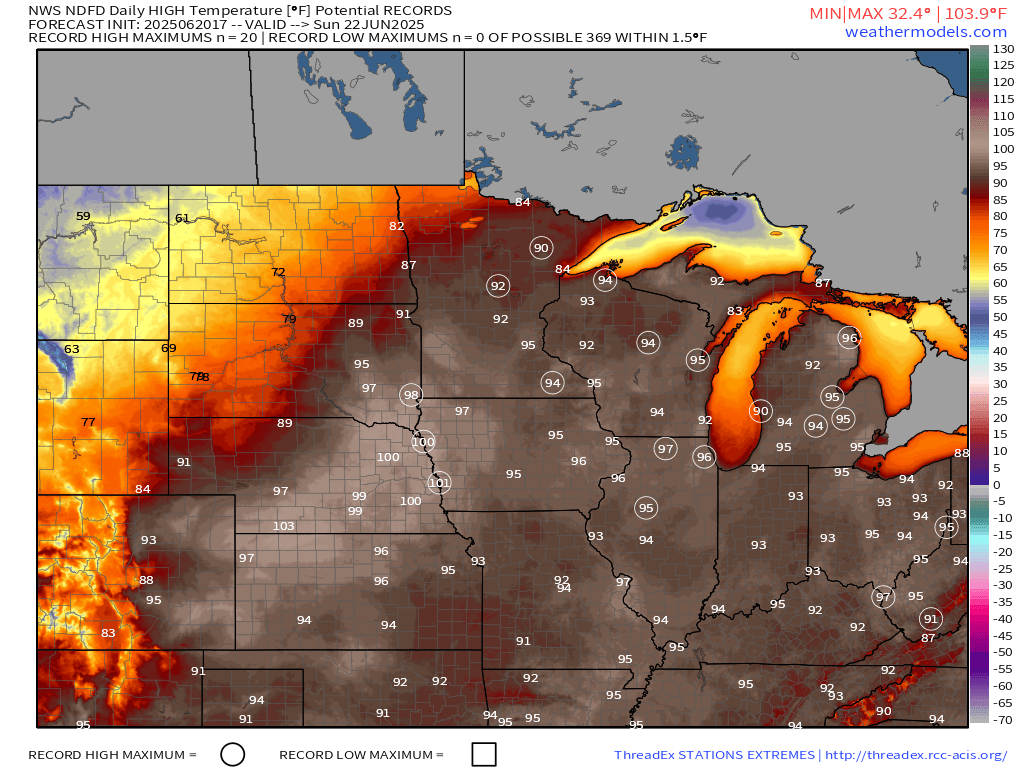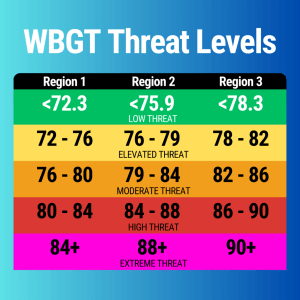Extreme heat will arrive this weekend through early-mid next week bringing widespread upper-90s and heat indices well into the lower 100s.

With many outdoor and summer sporting evenings ongoing, heat related illness will be a major concern in the coming days. While severe weather tends to get the most attention nationally, heat is the number one cause of weather related fatalities in the United States – averaging double the amount of annual deaths compared to flooding and nearly five times the amount of annual deaths from tornadoes. It’s very likely these numbers are actually under-reported due to other complications that heat exacerbates like cardiovascular disease, respiratory illnesses or other preexisting conditions. Approximately 19% of fatalities occur in the relatively young 15 – 44 year old age group with 45 – 64 year olds accounting for 33% of all weather related fatalities.

These statistics highlight an important truth: heat needs to be treated with as much urgency as other dangerous weather events like tornadoes, lightning and hurricanes. While temperature alone is a seemingly simple parameter to forecast, there are multiple nuances to predicting true heat stress threat levels that are underutilized by the general public. These include cloud cover, wind and sun angle – key factors that are not included in standard heat index calculations.
However, there’s another parameter that has become increasingly utilized by schools across the country in recent years that can also be utilized by decision makers in the outdoor event and work industries to more adequately plan for heat stress risks: wet bulb globe temperature.
The wet bulb globe temperature (or WBGT) considers a more comprehensive calculation to determine the true impact of heat on the human body. Additional parameters such as the sun angle, wind, cloud cover, latitude and solar radiation provide a more realistic picture than the heat index which is actually measured in the shade rather than in direct sunlight.
The value of the calculation itself, however, does not come out to be higher than the actual temperature value like heat index. This may initially create challenges from a communication perspective for the public which has long utilized higher heat index values to indicate a higher “feels like” temperature. That being said, regional heat safety thresholds have been developed for athletics and other outdoor work to provide decision makers with easy to understand threat level indications. Three regions have been created to best account for acclimation of different climate zones.



So what does WBGT say about the upcoming heat? Here’s a glance at Saturday June 21, 2025 from a regional perspective. Much of the Ohio Valley will be at high heat stress levels with parts of Michigan and Wisconsin by Sunday reaching extreme heat stress levels for that region.
To advocate for enhanced heat safety practices and empower decision makers with simple tools to make critical calls related to heat, WBGT is included in the hour-by-hour forecast on Clarity and “Now” screen at no additional cost. Installing WBGT sensors can cost hundreds to upwards of $1000+, but with advancing technology and intelligence included on platforms like Clarity, this has become an unnecessary and expensive step – especially if monitoring multiple different locations.
To learn more about WBGT check out our resource page here and access forecasts with a 7-day free trial of Clarity here.


